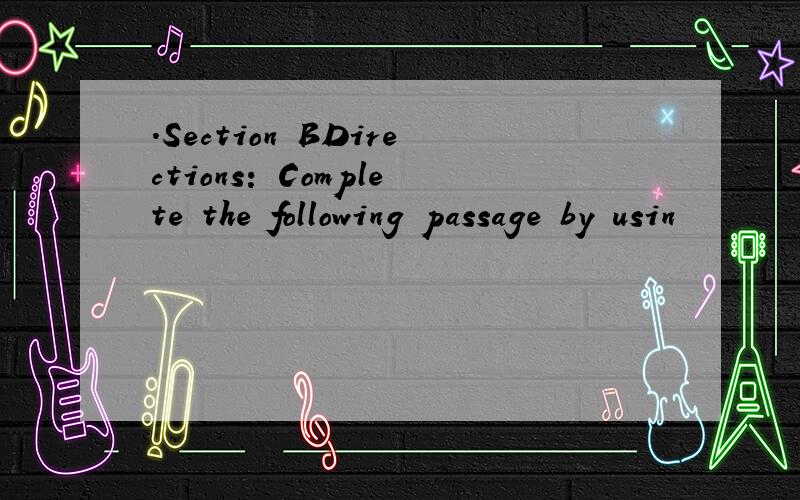.Section BDirections: Complete the following passage by usin
来源:学生作业帮 编辑:百度作业网作业帮 分类:英语作业 时间:2024/05/08 14:54:39
| . Section B Directions: Complete the following passage by using the words in the box. Each word can only be used once. Note that there is one word more than you need.
Perhaps the most famous theory, the study of body movement, was suggested by Professor Ray Birdwhistell. He believes that physical 41 is often culturally programmed.In other words, we learn our looks — we are not 42 with them.A baby has generally unformed face features. A baby, according to Birdwhistle, learns where to set the eyebrows by looking at those around — family and friends. This helps explain why the people of some areas of the United States look so much alike, New Englanders or Southerners have certain 43 face features that cannot be 44 by genetics. The exact shape of the mouth is not set at birth; it is 45 after. In fact, the 46 mouth shape is not formed until well after new teeth are set. For many, this can be well into grown-ups. A husband and wife together for a long time often come to look somewhat 47 . We learn our looks from those around us. This is perhaps why in a single country there are areas where people smile more than those in other areas. In the United States, for example, the South is the part of the country where the people smile most 48 . In New England they smile less, and in the western part of New York State still less. Many Southerners find cities such as New York cold and unfriendly, partly because people on Madison Avenue smile less than people on Peachtree Street in Atlanta. People in 49 populated areas also smile and greet each other in public less than do people in small towns. |

41. C 42.D 43.G 44.F
45. J 46. I 47.E 48.H 49.B
略
.Section BDirections: Complete the following passage by usin
Section BDirections: Complete the following passage by using
Section B Directions: Complete the following passage by usin
.Section B.Directions: Complete the following passage by usi
SECTION C Directions: Complete the following passage by fill
SECTION CDirections: Complete the following passage by
Section CDirections: Complete the following passage by using
Section BDirections: Read the following passage carefully an
SECTION C(12分)Directions: Complete the following passage by
Directions: Complete the following passage by using the word
Complete the following passage by filling in each blank with
Directions: Complete the following passage by using ONE word